Surface Finishes
Highest Quality Plating
Our Circuit Board Surface Finishes
EFT Fast Quality Service offers final finishes of highest demand from OEMs and pcb fab shops. These include electrolytic nickel and golds, electroless nickel and palladium, immersion and autocatalytic golds combined appropriately for maximum benefit and reliability for all assembly applications. Multiple finishes on the same board are achievable and we can recommend best practices for manufacturability. Visit this website for technical articles on new finishes and process additions we make to further enhance reliability for your customers.
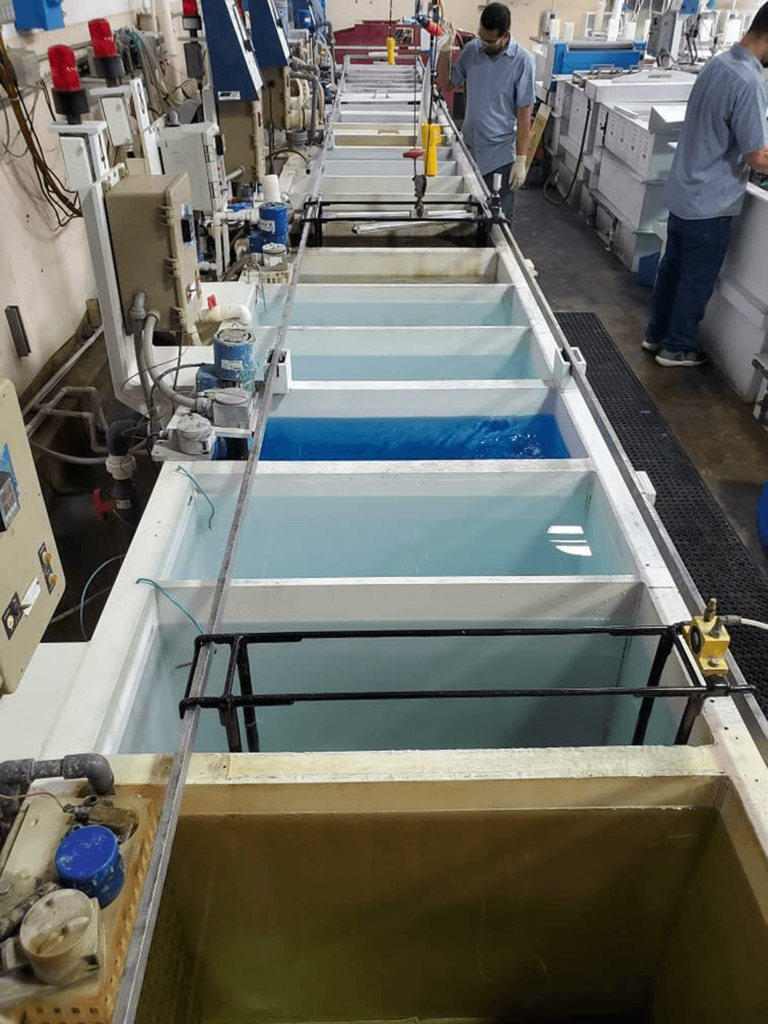
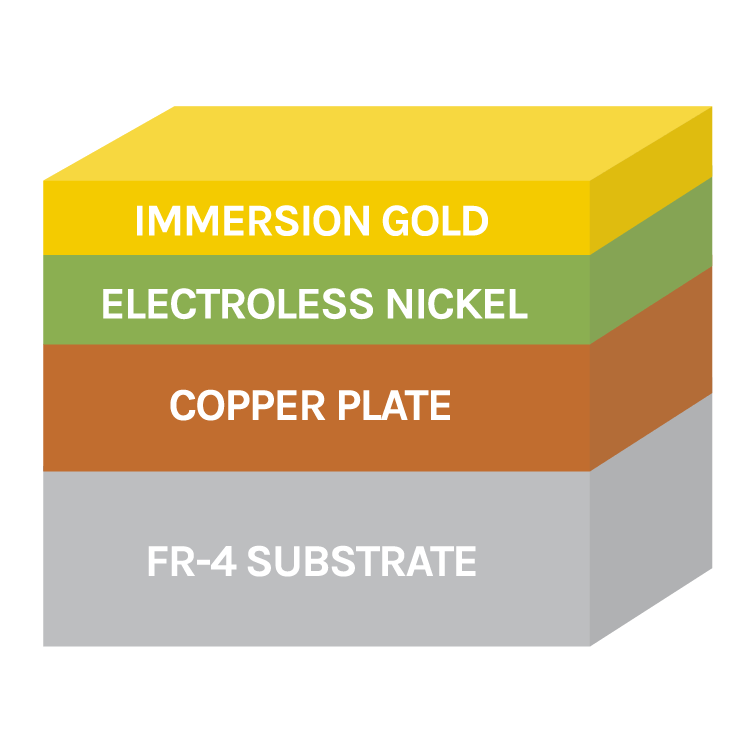
ENIG
Electroless Nickel Immersion Gold
Features of ENIG surface finish:
- Reliable surface finish that provides excellent solderability through multiple number of reflow cycles.
- The IMC interface is stable and the surface can be used for aluminum wire bonding.
- Optimized ENIG process designed for high end HDI manufacturing and excellent thickness distribution.
- Reduced nickel corrosion, minimized extraneous nickel plating and outstanding soldermask mask and base material compatibility
- Utilizes a mid-Phosphorous Electroless Nickel with process controller
- Process conforms to the IPC 4552-A specification (1.58-3.94 μ” Au over 118.1-236.6 μ” Ni Rigid Boards / over 50.0-236.2 μ” Ni Flex Boards)
- Deposit integrity/performance is evaluated by supplier periodically within 4 nickel bath MTO’s (IPC-4552-A requirements)
- Tank sizes capable of running oversized panels (up to 24 x 30.5 inches).
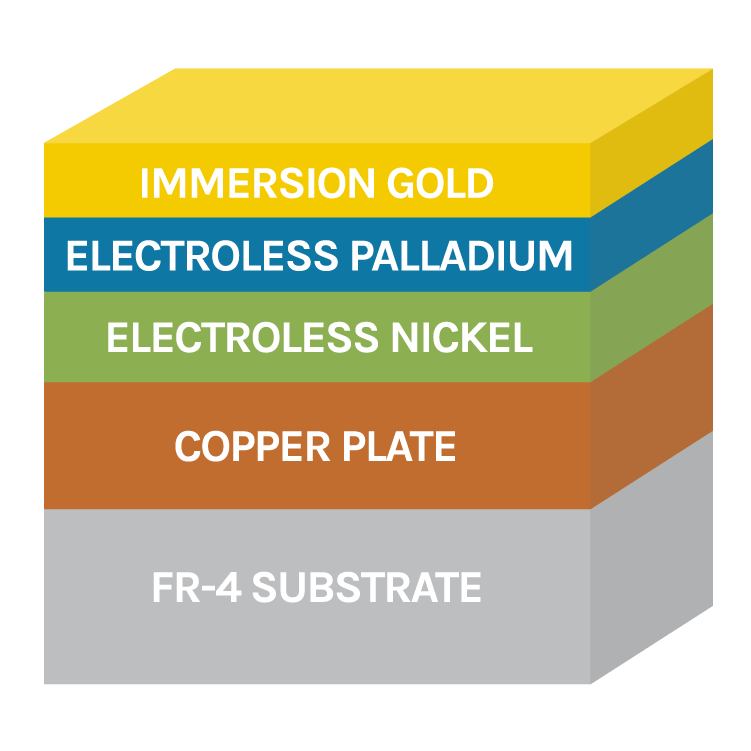
ENEPIG
Electroless Nickel Electroless Palladium Immersion Gold
Features of ENEPIG and ENEPIG PLUS surface finish:
- Uniform planar plated metals
- Deposits provide excellent wire bond pull strengths
- Excellent solderability
- Dense deposit package
- Ideal mixed technology surface for different assembly requirements
- Low contact resistance
- RoHS Compliant
- Stable process resulting in minimum corrosion reactions, no skip (“black pad”) or erroneous nickel plating.
- Process conforms to the IPC 4556 specification (1.2 μ”min. Au over 2-12 μ” Pd over 118.1-236.2 μ” Ni)
- ENEPIG PLUS: EFT also has the unique ability to put an Electroless Gold deposit directly onto the Palladium surface. The Electroless Gold step is tightly controlled and is useful for those desiring thicker gold deposits for the ENEPIG process
- Tank sizes capable of running oversized panels (up to 24 x 30.5 inches).
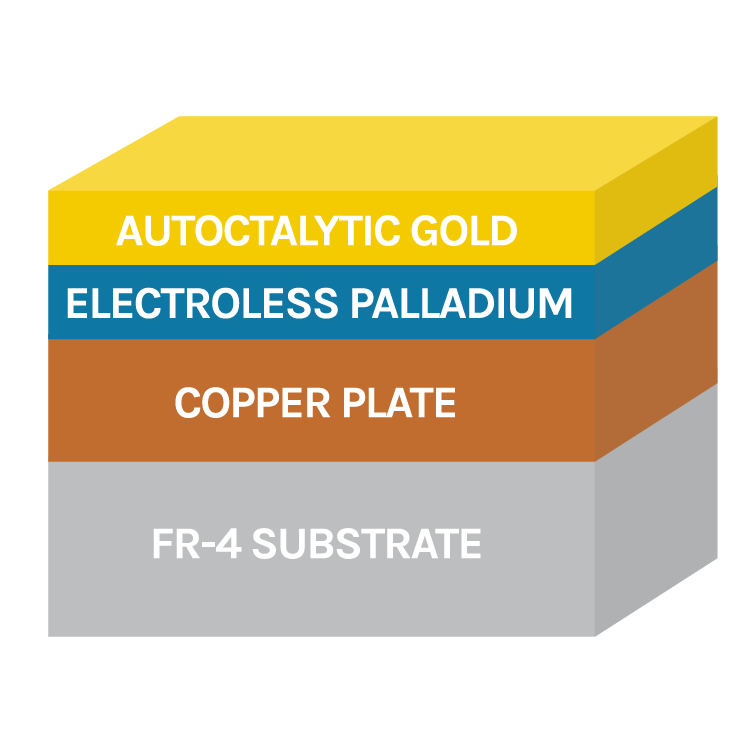
EPAG
Electroless Palladium Autocatalytic Gold
Features of EPAG surface finish:
- EPAG is the latest development in pcb surface finish work and is very attractive due to the elimination of nickel
- Designed to provide a multi-functional and highly reliable final finish for high density circuitry without compromising signal integrity ideal for high frequency applications (ie., 5G) and higher.
- The dense precious metals coating package provides a diffusion barrier because both processes are electroless and copper cannot move through palladium readily
- Passes solderability, wire bonding and environmental testing with exceptional results using thin coating thicknesses.
- These highly conductive metals are ideal for rigid, flex and rigid-flex applications
- The thin planar coating allows for very tight spacing between circuit features
- IPC Specification is being formatted. Thickness are 4-8 μ” Au over 4-8 μ” Pd.
- No nickel adds another benefit for minimizing potential signal frequencies or interference and no magnetism
- No nickel plating and low thickness requirements result in shorter processing times
- New, dedicated process line with multiple component controllers for consistent results.
- The EPAG tanks can handle panels up to 24 x 24 inches.
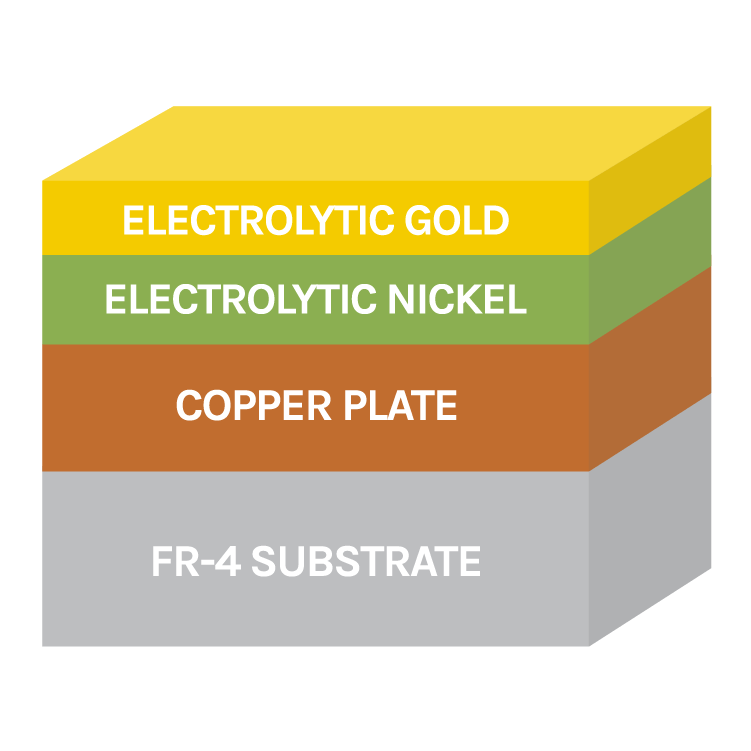
Electrolytic Gold
Hard and Soft Electrolytic Gold
Features of Hard Electrolytic (Deep) Gold surface finish:
- Electrolytic hard gold conforms to the ASTM B-488 and DTL-MIL-45602 specifications.
- Hard gold deposits are bright, wear resistant and readily solderable at low thicknesses
- Baths are regularly analyzed for chemical components and Hull cell analysis performed.
- Periodic testing for bath component and additive verification is performed by a certified outside lab and includes purity and hardness tests of the deposit per specifications.
- Hard Gold conforms to the requirements of Type I (>99.7%) and Type II (>99%) purity with a microhardness Code C (130-200 Knoop hardness).
- Plated gold is used as an etch resist and leaves bare copper sidewalls.
- Tank sizes capable of running oversized panels (up to 25 x 31 inches).
Features of Soft Electrolytic Gold surface finish:
- Electrolytic soft gold conforms to the ASTM B-488 and DTL-MIL-45602 specifications.
- Soft gold deposits are duller than hard gold, can be soldered and provide an excellent coating for gold wire bonding
- Baths are regularly analyzed for chemical components and Hull cell analysis performed.
- Periodic testing for bath component and additive verification is performed by a certified outside lab and includes purity and hardness tests of the deposit per specifications.
- Soft Gold conforms to the requirements of Type III (>99.9%) purity and microhardness Code A (90 Knoop hardness maximum). Baths can be treated for impurities as needed.
- Tank sizes capable of running oversized panels (up to 25 x 31 inches).
Features of Electrolytic Nickel surface finish:
- Electrolytic nickel is used as a diffusion barrier between copper and electrolytic gold.
- The deposit is low stress, semi-bright plated from a sulfamate bath.
- This deposit conforms to industry specifications AMS QQN-290, AMS 2424 and AMS 2423.
- The nickel deposit properties are maintained through certified outside lab analysis and periodic bath treatments.
- Higher deposit, pit-free thicknesses are achievable (> 1 mil) by request with special set-up and controls of the bath.
- Tank sizes capable of running oversized panels (up to 30 x 55 inches).